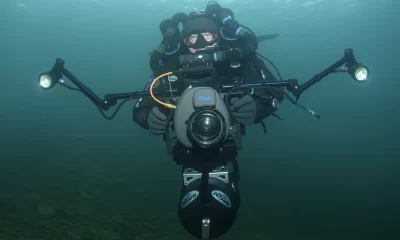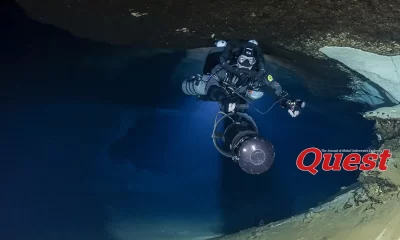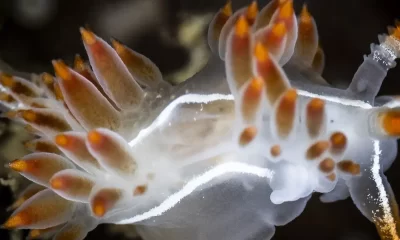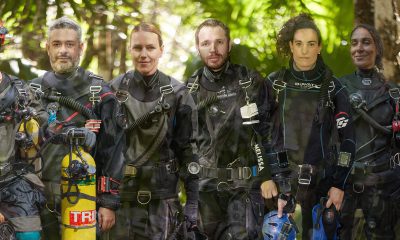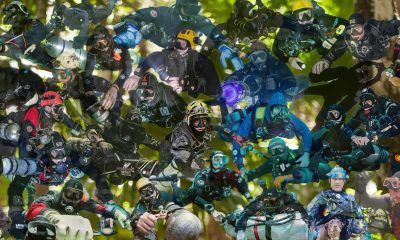Community
The Who’s Who of Sidemount

Brian Kakuk
Brian Kakuk was a former US Navy Diver and took part in some of the early cave exploration projects with Jill Heinerth at Wakulla Springs, FL and opened up the caves of Abaco. He is now the guardian of the Crystal Caves of Abaco Bahamas and through Bahamas Underground works to conserve these caves and also introduce suitably qualified and skilled divers to what are one of the absolute cave wonders of the world.
What is sidemount to you?
For me in the beginning, sidemount was simply a way for me to begin cave diving. When I started going into underwater caves in the late 80’s, I was young and didn’t have the money for backplate, wing, crossover manifold etc. But I was able to copy British sidemount systems and make them myself that allowed for the redundancy I needed to enter cave diving. Since then, of course, sidemount has evolved greatly with much better design, function and safety. For many, sidemount was and still is simply a tool for small caves. For me, here in the Bahamas, sidemount, and more specifically closed circuit sidemount, is a configuration of choice that meets all my needs for cave exploration, research, conservation, and teaching.
What can be improved with sidemount in general?
If there was something to be improved in sidemount, my initial thoughts would of course be training and innovation. As the newer generations of divers come onto the scene, new ways of looking at things and new ideas will of course improve available systems. This should also drive the improvement of safety/training standards while continuing the inclusion of accident analysis as more and more sidemount dives are conducted. The configuration is now used in different caves, i.e. different environments all around the world. Cold, sump, deep, low visibility dives by a global population of up-and-coming cave explorers will inevitably lead to improvements in the system. I for one will be extremely jealous of the new explorers having such amazing kit available to them with the single click of an Amazon button.

Was there an epiphany moment for you with sidemount?
Although at the time I had been exploring deep, virgin underwater caves in the Bahamas for five years, the day I dived in Conch Sound Blue Hole on Northern Andros (September 6th 1993) will always be one of my “oh wow” moments. British explorers Rob Palmer and Martyn Farr had put 1000 meters of line in that cave, establishing a world record dive for a marine (ocean) cave in 1982. Eleven years later, using a more evolved sidemount system, diving solo and armed with local knowledge of tides and currents, over a few days, I was able to set enough stage cylinders to reach what was then the end of their line and extend it nearly another 1000 meters. This was my “oh wow” moment. It was the realization that using my configuration, not only was I able to obtain depths and distances of the explorers who I considered the best in the world at the time, but to continue with further exploration of my own. It was the day I realized I was truly an explorer and sidemount was the configuration that allowed me to achieve that.
When a sidemount diver is truly a sidemount diver?
Tough question. I think it is different for everyone. Certainly, once skills like trim, buoyancy, spatial awareness and efficiency are mastered, one could consider themselves a sidemount diver. However I think that those things all come together for someone who has decided that this configuration is their configuration of choice. If it is your go-to system, then of course your skills will improve over time and through muscle memory, the diver “becomes one” with the system…. Cheesy commentary yes, but true.

Any tips for protecting the cave while diving fragile environments?
In my opinion, the most effective way to protect very fragile caves, meaning highly decorated or caves with irreplaceable cultural material or biological material is by having a vetting process for access to the particular cave i.e., a guide requirement as well as a vetting process for guides as well. While this may not sit well with many cave divers, it is a proven fact that unregulated diving in underwater caves leads to increased destruction of highly decorated caves.
Second to that would be the diver’s skill and choice of equipment for the particular cave. For example, I see that divers who chose lighter AL 80 cylinders over steel cylinders have much more control overall when contorting around densely decorated crystalline formations. The steel cylinder configuration wants to keep the diver in the perfectly flat cave diver position, and rightly so. However, when a diver must lay up on their side and hold that position while moving through thin “crystal bars” (pillars), helictites coming from odd directions etc. then the divers with AL 80’s have an advantage, as most sidemount systems hold the aluminum cylinders closer to the diver’s body. This can be adjusted for with steel cylinders by using additional bungee to hold the cylinders to the body, but 99% of steel tank divers do not use this modification as it is rarely needed in less delicate caves.
I would also add drysuits as another hurdle while diving a highly decorated cave where odd contortions may be needed to pass without making contact. Once the air goes into the legs or feet of the drysuit, it can be difficult to get the diver back into the correct position from a head down-sideways orientation without hitting fragile formations in the process. Wetsuit divers have the advantage here.
Return to: The Who’s Who of Sidemount
DIVE DEEPER
Speaking Sidemount: E008 – Brian Kakuk Interview: The Caves of the Bahamas
Speaking Sidemount: E049 – Brian Kakuk Interview II



















